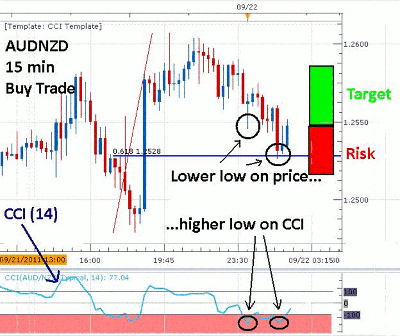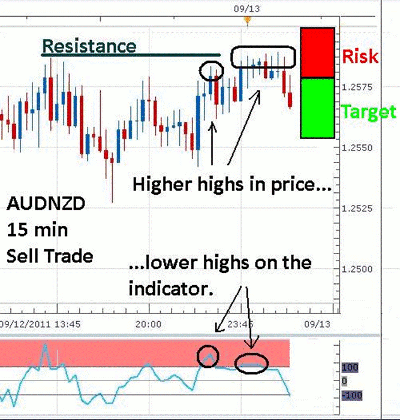This range strategy uses technical analysis and clear entry and exit rules to identify and execute daytrades on typically slower-moving currency pairs like AUD/NZD, writes Jeremy Wagner of DailyFX.com.
In the midst of stock market volatility, there are pockets and places where currencies are trading sideways. When the markets tend to move sideways, I’ll look to the “JW Ranger” strategy for trading opportunities.
It is a daytrading strategy where trades are entered and exited generally within 24 hours. The strategy usually produces a trade every one or two days on a 15-minute candlestick chart.
This week, we have several large news events that could move the market. This volatility may produce wide ranges and additional trading opportunities on what I have dubbed the “JW Ranger” strategy using cross pairs (see below for AUD/NZD).
Strategy Set Up
I’ll trade this strategy when the market has a tendency to move sideways. This means support and resistance levels tend to hold and there is less likely a chance of a breakout. This type of market generally occurs during the Asian trading session (4 pm - 2 am ET) or during the first week of a new month (with several major news announcements that week).
During certain weeks, we have Reserve Bank of Australia (RBA), Bank of England (BOE), and European Central Bank (ECB) all with target rate announcements. Then the same week could have a US Jobs report. This provides a potential for some currencies to stagnate through the week as traders wait for all news events to finish, offering us an opportunity to trade the JW Ranger strategy.
This strategy is typically traded on 15-minute to one-hour candlestick charts. It uses divergence on the Commodity Channel Index (CCI) with an input setting of 14 to open up an entry signal.
A stop is placed about 20-25 pips away, and the take-profit level is generally about 20-25 pips away, yielding a 1:1 risk/reward ratio.
When daytrading, it is difficult to find many set-ups with a stop loss large enough to give the trade enough room to breathe, yet still tight enough that you are not giving up too much risk. So the 1:1 risk/reward ratio is not ideal, but for a daytrading strategy, this is as realistic as possible. Insist on keeping risk/reward ratio at 1:1 or better.
Here are the entry rules:
- Identify levels of support on your chart. I have used a Fibonacci retracement level above to determine support
- Wait for prices to create a lower low near this support zone while CCI is creating a higher low. This is also referred to as CCI divergence
- Enter a buy trade when the CCI crosses above -100
- Place your stop about ten pips below the swing low
- Set your take-profit level at the same distance as your stop for a 1:1 risk/reward ratio
Here is an example from a few months ago:
NEXT: Exit Rules for Trading This Strategy
|pagebreak|Here are the exit rules:
- Identify levels of resistance on the chart. Above we have horizontal resistance (dark green line)
- Wait for prices to create a higher high near this resistance zone while CCI is creating a lower high
- Enter a sell trade when the CCI crosses below +100
- Place your stop about ten pips above the swing high
- Set your take-profit level at the same distance as your stop for a 1:1 risk/reward ratio
You have two similar economies that are geographically located near each other. Therefore, they tend to be strong trading partners and their economies will closely follow each other. Therefore, the AUD/NZD exchange rate tends to range most of the time.
Find a pair that has been range bound (and it can be other pairs since this is a range strategy).
See also: Forex Strategies: The Breakout Trade
By Jeremy Wagner, lead trading instructor, DailyFX.com












